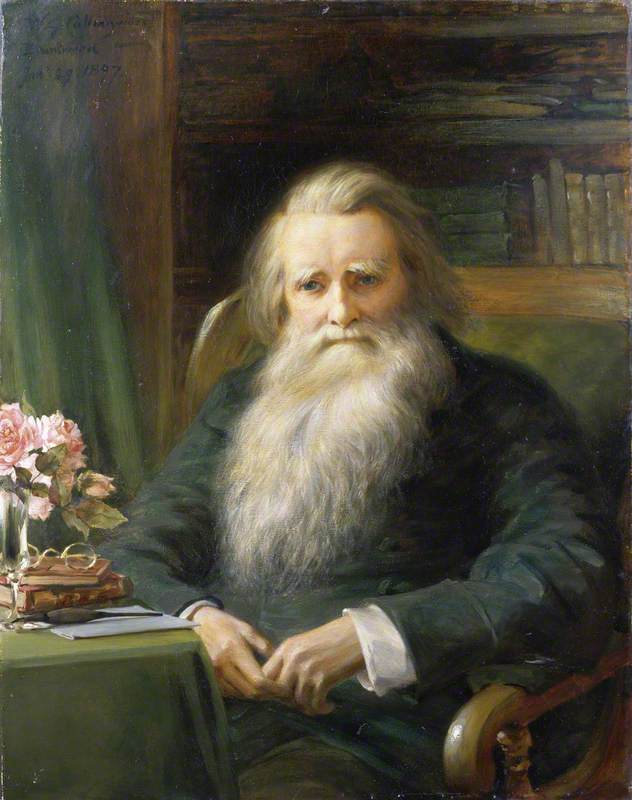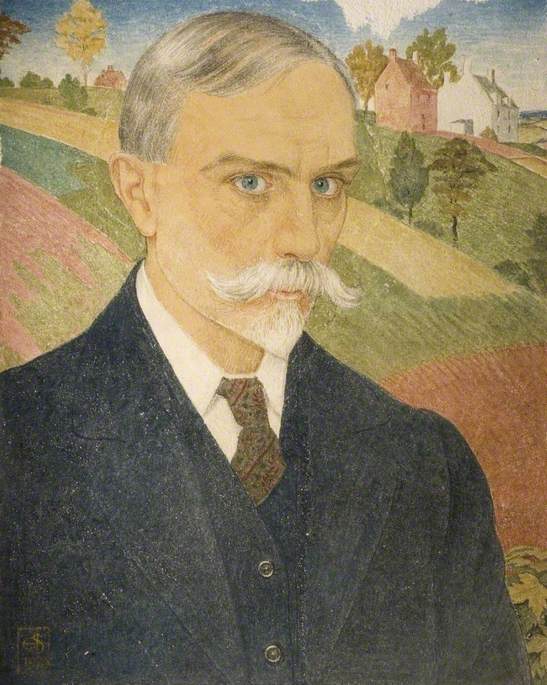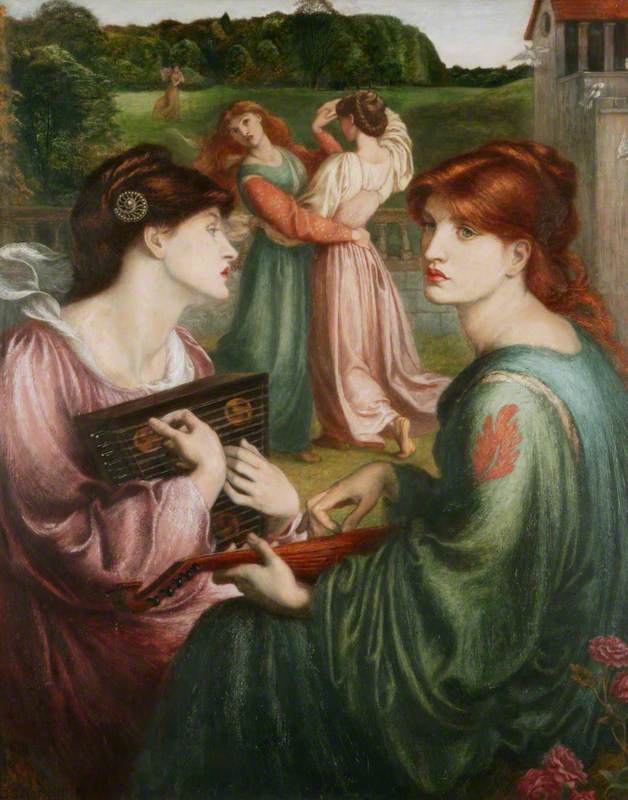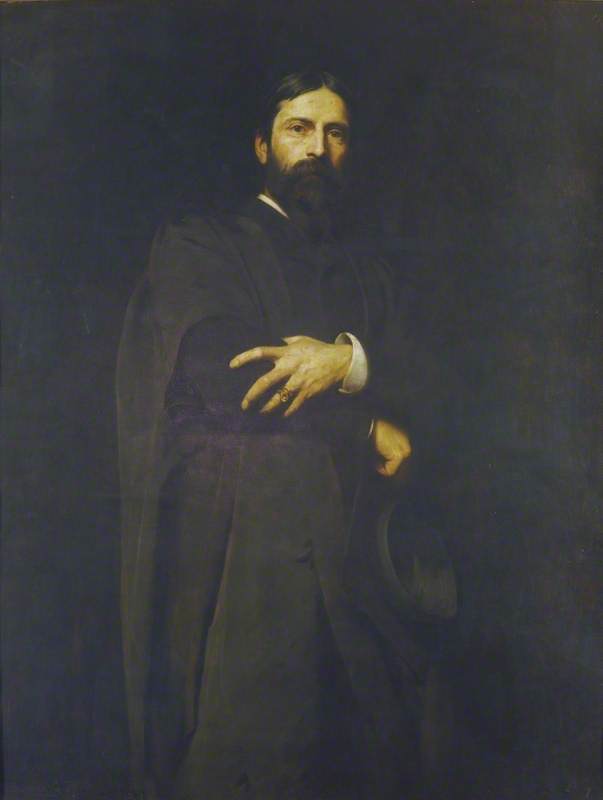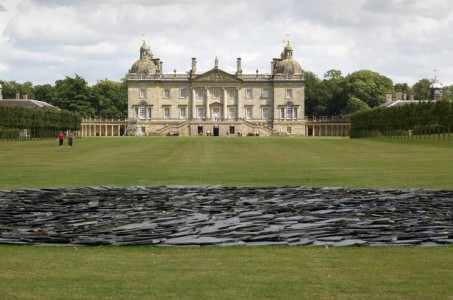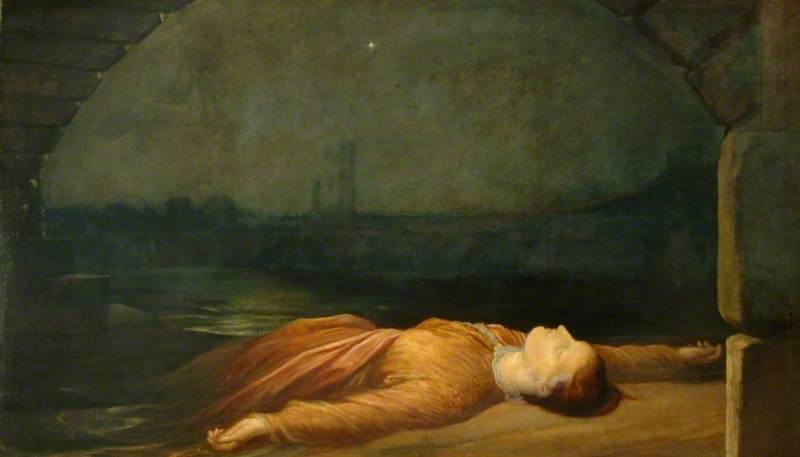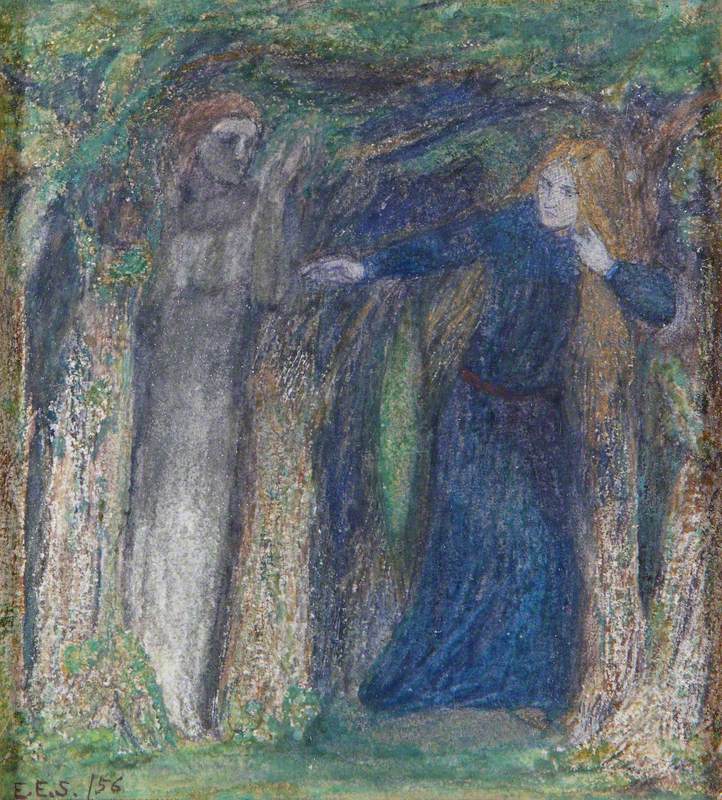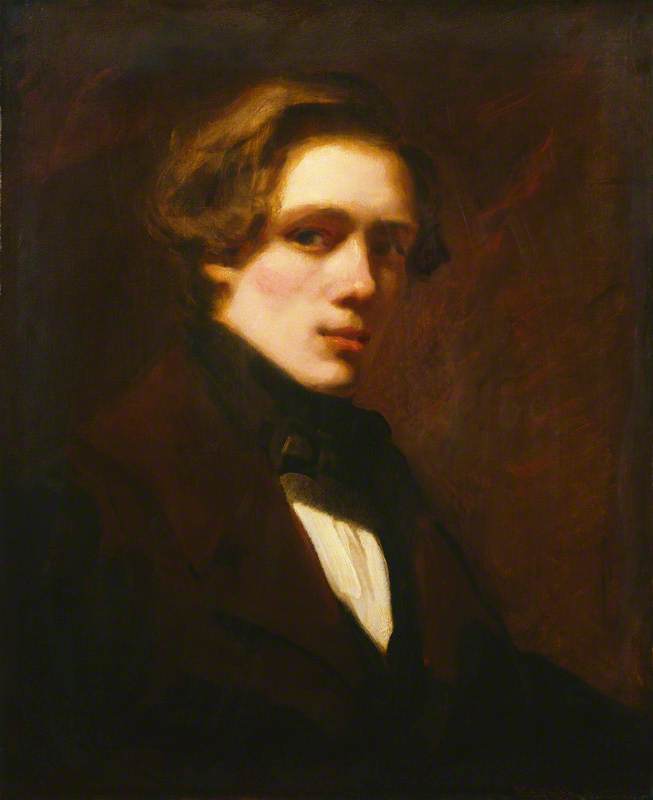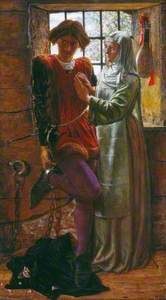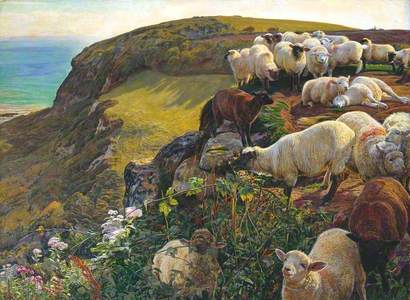John Ruskin (1819–1900) was one of Britain’s most prolific art critics, who championed the careers of J. M. W. Turner and the Pre-Raphaelites, alongside many others.
John Ruskin (1819–1900)
c.1841
Thomas Richmond II (1802–1874) 
But who was Ruskin? A significant literary figure who now symbolises the Victorian era, Ruskin was also a painter, photographer, botanist, early environmentalist, philanthropist and social reformer, who vehemently criticised both industrialisation and capitalism. He inspired countless influential figures, from William Morris to Marcel Proust, Mohandas Gandhi, and Leo Tolstoy.
Despite Ruskin’s impressive career, today he is perhaps most remembered in the popular imagination for his controversial marriage to Effie Gray, which resulted in a scandalous love triangle between himself, Gray and the painter John Everett Millais. Over a century later, the rumours that once sent shockwaves through prudish Victorian society continue to fascinate modern audiences.
A selection of his own rarely seen works can be viewed on Art UK, and his life and works are celebrated in the exhibition 'John Ruskin: The Power of Seeing' at Two Temple Place, London (from 26th January to 22nd April 2019).
Ruskin was born on 8th February 1819 on Brunswick Square, London. Raised by an Evangelical Christian family as an only child, he had a relatively sheltered upbringing. Educated at home by private tutors and his mother Margaret, from a young age he showed an interest in art, first stumbling upon the engravings of J. M. W. Turner as a teenager, after receiving Samuel Rogers’ book, Italy.
The following year, Ruskin attended the Royal Academy summer exhibition, where he stood before Turner's paintings – a moment which would spark his lifelong obsession with the artist. Aged 17, Ruskin attended Oxford University, where he developed his writing. In 1838, he was awarded the prestigious Newdigate Prize for his poem Salsette and Elephanta (Oscar Wilde later won the prize in 1878).
Unable to live without her son, his mother Margaret moved from London to Oxford, where she took up lodgings. In the 1820s, both she and John had been painted by the well-known artist James Northcote.
In 1840, after showing signs of consumption (now known as tuberculosis), Ruskin left his studies to travel around Europe with his parents, visiting Switzerland, Germany, France and Italy.
In 1843 aged 24, the first volume of Ruskin’s Modern Painters was published. The five-volume work declared the artistic genius of J. M. W. Turner, a controversial statement as many leading critics had begun to dismiss Turner’s later work. Perhaps too radical for his generation, contemporaries regarded Turner's later, almost impressionistic paintings as unfinished, coarse, imbecilic, and even dirty – he often used his own saliva to smear the paint on his canvases. However, Ruskin's writings on the artist helped to establish him as a tortured hero of Romanticism. This idea has largely endured, such as in the portrayal by Timothy Spall in Mike Leigh’s 2014 film Mr Turner.
Modern Painters laid the foundations for Ruskin's philosophies on art and aesthetics. He encouraged landscape painters to return to nature, rather than merely imitating the painted landscapes of the Old Masters. For Ruskin, art was an expression of morality – undoubtedly inspired by his religious upbringing. Above all, he believed that art should convey truth. His writing also proposed a new purpose for painting, which at the time was being surpassed by photography as a means to accurately portray nature.
Ruskin also inspired the Pre-Raphaelites, a group of English artists who sought to undermine the dominance of the Royal Academy. They took Ruskin’s call to return to nature very seriously, and like Ruskin, they idealised the medieval era (hence 'Pre-Raphael'), seeing it as a romantic, pre-industrial age.
Ruskin formed close friendships with the founding members of the Pre-Raphaelite Brotherhood – William Holman Hunt, Dante Gabriel Rossetti and John Everett Millais. From the hundreds of letters they exchanged, it is clear that the artists regularly asked Ruskin's opinion or advice. In one particular letter to Holman Hunt, Ruskin informed the artist that his female figure in the painting Claudio and Isabella (1850) was not considered attractive enough.
Around this time, Ruskin was also an influence on neo-Gothic architect Augustus Pugin and designer William Morris, two central figures of the Arts and Crafts Movement. They were not only inspired by Ruskin's beliefs on art and
In 1894, Morris wrote in How I Became a Socialist:
'... how deadly dull the world would have been twenty years ago but for Ruskin! It was through him that I learned to give form to my discontent, which I must say was not by any means vague. Apart from my desire to make beautiful things, the leading passion of my life has been and is hatred of modern civilisation.'
Ruskin had a particularly close relationship with Millais – the artist had painted Ruskin while in Scotland in 1853. Ruskin's wife Euphemia 'Effie' Gray later married Millais – a story that scandalised Victorian high society.
Euphemia ('Effie') Chalmers, née Gray, Lady Millais
1851
Thomas Richmond II (1802–1874) 
Ruskin had known Effie since she was just 12, and they married in
In a letter to his lawyer during the annulment proceedings, Ruskin wrote:
‘It may be thought strange that I could abstain from a woman who to most people was so attractive. But though her face was beautiful, her person was not formed to excite passion. On the contrary, there were certain circumstances in her person which completely checked it.’
Despite six years together, the marriage was never consummated. By that time, Millais had fallen in love with Gray, who he had painted for his large-scale painting The Order of Release. In 1855, Millais and Gray were married, eventually having eight children together. Millais painted Gray in 1853, and again 20 years later in 1873.
The ongoing fascination over the love triangle between Gray, Millais and Ruskin has inspired multiple dramatisations, including the 2014 film Effie Gray (2014), starring Dakota Fanning and Emma Thompson.
Ruskin never remarried. But his unrequited love for his young student Rose La Touche has been relatively well documented. Controversially, Ruskin first met Rose when she was 10 years old.
The latter half of Ruskin's life was spent writing and publishing many notable books such as The Stones of Venice (1853), The Political Economy of Art (1857), and Unto This Last (1860), the latter of which followed his crisis of faith – he became disillusioned with Evangelical Christianity. In 1869, he was appointed Slade Professor of Fine Art at Oxford University, eventually founding his own art school, still known today as The Ruskin School of Fine Art and Drawing.
Ruskin continued to spark controversy. In 1877, he was sued for libel by American artist James Abbott McNeill Whistler for writing 'I have never expected to hear a coxcomb ask two hundred guineas for flinging a pot of paint in the public's face'.
Remarkably, Ruskin's work even reached Gandhi, who was particularly influenced by Unto This Last, which he translated into Gujarati and used as a basis for his own political and economic theory. In his translation, titled Sarvodaya, he wrote:
'I believe that I discovered some of my deepest convictions reflected in this great book of Ruskin and that is why it so captured me and made me transform my life.'
John Ruskin died from influenza in 1900, in his home of Brantwood, in the Lake District. Perhaps history has not been so kind to him. Rather than focusing on his insatiable pursuit of knowledge, or his influential ideas about art or social welfare, for many, what has stuck in the imagination is his infamously awkward (and unconsummated) wedding night.
Irrespective of his questionable personal life, Ruskin's contributions towards art and ideas remain some of the most groundbreaking and progressive of the nineteenth century. Still today, the adjective 'Ruskinian' is used, designated to those who follow Ruskin's artistic and social theories.
Lydia Figes, Content Creator at Art UK














